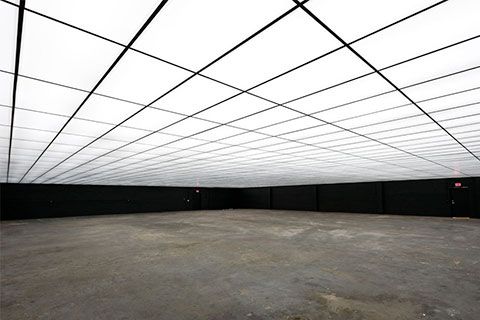7 Secrets Every Film Student Should Know
When you're starting out as a film student, the world is your oyster. You're enthusiastic, excited and ready to create – and the best way to keep that enthusiasm alive is to keep learning new things and new ways of doing old things.
At Giggster, we have 3 years of experience providing locations for thousands of films, many of those being student films. Our team consists of people who have been there, done that in the industry, and we've put together 7 lesser known tips for students like you – read on to find out what they are!

1. Shorter Projects Can Work In Your Favour
Today, short content is becoming incredibly popular to produce as well as to consume. With the prevalence of mobile video today, shorter content is more easily shareable and more easily consumable – making sure that your film gets as many eyes on it as possible.
Even though The Academy of Motion Picture Arts and Sciences defines a short film as "an original motion picture that has a running time of 40 minutes or less, including all credits", it might be more preferable if you keep your film to around 10 minutes.
Moreover, a short short film will challenge you to boil down your plot and characters to only what's necessary – furthering your skills as a writer and filmmaker. A lot of times the most captivating short films are the ones that are crisp and clear in their execution.
Lastly, short short films, by virtue of them being smaller projects, cost lesser than feature length or longer-form short films. Aside from their lower monetary cost, creating a short film allows you to tune your skills in networking and asking favours!
Who knows, your next short could expand and become the next Oscar-winning feature.
Rent a location for your next film or photo shoot project on Giggster – A better way to book locations.






2. Dialogue ≠ Information
In a lot of student films, there is dialogue that is just repeating or saying out loud what the character is about to do. "I'm going shopping." – and then the character is seen going shopping – this is quite unnecessary and is seen in many student films.
Dialogue does not serve the purpose of delivering information, it serves the purpose of informing the viewers of the character. Information can be delivered by visual means – the character being seen going shopping is enough to inform the viewers that he/she has indeed gone shopping.
To have greater impact, you can leave the dialogue, and instead work on what's visible on the screen – characters' actions, their emotions, and their expressions.
3. Networking is Key
While you're in film school to learn how to make films, don't miss out on the opportunity to network with fellow students, professors as well as alumni. You never know which one of your mates will become the next producer for The Verge or the next award-winning feature filmmaker.
Make sure that you're chatting with your classmates at least enough to add them on LinkedIn (or Instagram, even) – you never know who reaches where, and when that connection can become handy in the future. This holds true especially even for students in your film classes who are not film majors – they might end up at media companies in other positions that may prove to make valuable connections.
At the very least, stalk your classmates on LinkedIn to see what their interests are, where they interned in the past, and what they plan to do.
4. You Can Make a Niche Film
This is the one time in your film career that you're not bound by the pressure to sell tickets, so you can really feel free to make any type of film you want, to any kind of audience.
It's the perfect time to truly explore your creativity, your desires and your motivations without anyone else telling you what you can or cannot make a film about. You don't have to worry about marketing or about impressing any studio head – you truly have the freedom to make what you want.
5. Good Locations Don't Have To Be Expensive
There are usually two expensive components to a film shoot – the gear and the locations.

Thankfully, the latter does not always have to be expensive. You can use Giggster's new student landing page to quickly see our top student-filming locations, and even do a quick search by budget – so that you only see locations that you can afford.
You can even find free locations to shoot at – it's a bit more work, but it's totally possible.
6. You Can Show Off
Especially if your project is a short film, perhaps under 10 minutes, it is much more doable to spend lots of effort on every single shot and sequence. You can incorporate more VFX, top-notch cinematography, and generally put in more into each shot, since there are a limited number of them.
This will ensure that you impress the hell out of anyone that's watching your film, making it more impactful and hard-hitting.
7. Film Permits for Students Are Really Cheap
You still need a permit for student films. However, you're in luck: FilmLA offers significantly cheaper student permits – starting at $26 for a simple permit. You'll however need a proof of student status as well as a letter from your instructor stating that the project is for educational, non-commercial use.

FilmLA has significant staff resources to help students and other first-time filmmakers with permit-related challenges – they're truly there to help you out, and you should make sure you utilize all of their resources to your advantage! They even offer free help from their Production Planning department if you're a student working on your senior thesis or any other more involved project.
You can read more about the permitting process here.
There you go, folks. These are our 7 lesser known secrets for film students – we truly hope that this article brought you some value!
Search from over 5000+ locations available to rent for filming on Giggster.
Also read: The Ultimate Guide to Location Scouting

